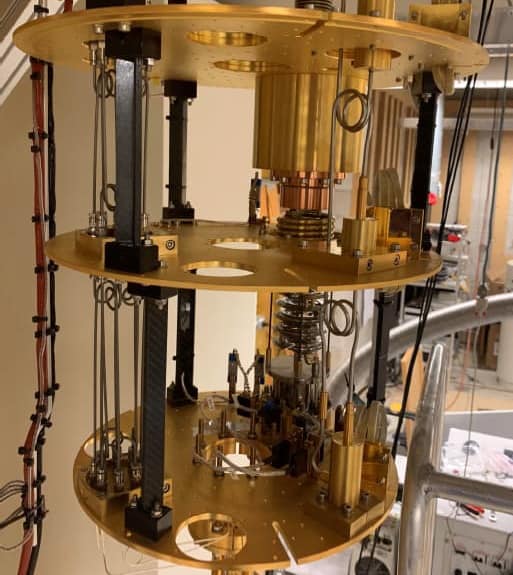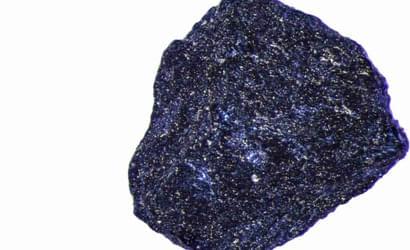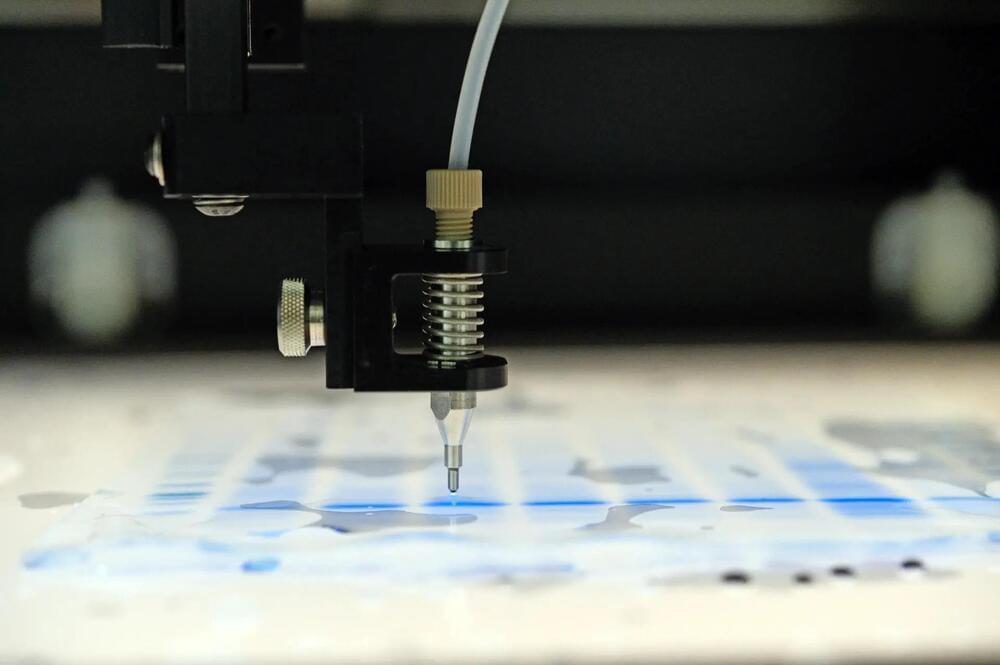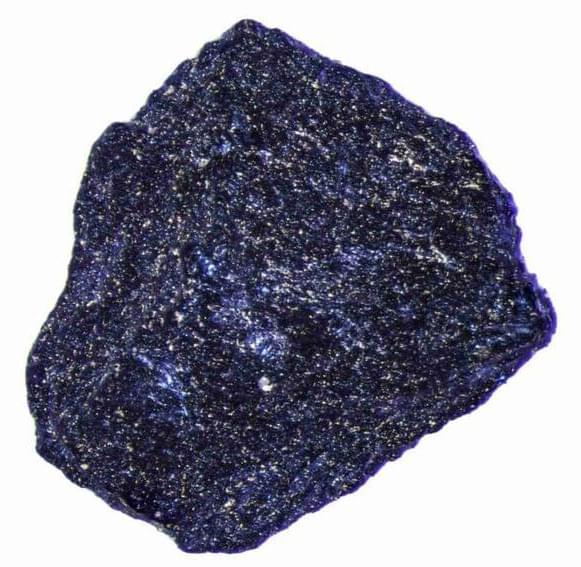“Measuring tBLG devices: the cryostat insert used in the experiments. (Courtesy: J Lau)” Measuring tB.
Category: materials – Page 126
The breakthrough could one day transform technologies that use electric energy, but it comes from a team facing doubts after a retracted paper on superconductors.
Another part of that wariness arises because, to date, no one has independently reproduced Dias’ team’s results. This lack of verification was raised by Jorge Hirsch of the University of California, San Diego, in the last talk of the session in which Dias and his team spoke. Hirsch argued that those claiming to have created high-temperature superconducting hydrides suffered from “confirmation bias,” cherry-picking evidence to support their agenda. (Hirsch has been an outspoken critic of Dias’ work.) As the last question of the session, Dias asked Hirsch, “Could you also have confirmation bias?” “Maybe,” Hirsch replied.
After the session, a few attending researchers—all collaborators of Dias—spoke with Physics Magazine, telling us that they disagreed with Hirsch’s cherry-picking conclusion. One of them, Russell Hemley of the University of Illinois Chicago confirmed Pasan’s claim that they have replicated the 2020 carbonaceous sulfur hydride—as reported in an arXiv paper that the team recently posted [3].
Dias’ group still needs to more precisely characterize NLH’s chemical composition, Pasan said. The samples also appear to consist of two phases, an observation that they need to investigate. Ultimately, they plan to innovate upon this material to create a superconductor at ambient pressure and temperature conditions, a goal that Pasan said he thinks is feasible. But extraordinary claims require extraordinary evidence, and the community has much of the latter still to gather.
The ultimate miniature electronic device may be one that manipulates individual electrons with subnanometer and subfemtosecond precision. The past few decades have seen immense progress in the control of ultrafast electronic processes, including in the context of vacuum nanoelectronics, where electrons travel from a nanoscale emitter to a target electrode through a vacuum. Now Hirofumi Yanagisawa at the Japan Science and Technology Agency and colleagues have taken an important step toward optimal spatial control by using the orbitals of a single molecule to shape its electron emission (Fig. 1) [1]. The approach offers the prospect of building highly controllable electron emitters, but also of furthering our understanding of the role of molecular orbitals in the electronic structure of solids.
Fundamental to achieving extreme control over electron emission is defining the spot from which electrons are ejected from the emitter. One approach is to physically shape the material of the emitter into the desired spot pattern. Doing that at the subnanometer scale would entail significant material-and fabrication-related challenges, however. Instead, Yanagisawa and colleagues have demonstrated the clever idea of using the inherent electronic structure of a molecule to route the electrons for emission. In essence, the molecular orbitals are used as a spatial filter to control the emission pattern.
The team’s work grows out of two broad areas of investigation that have progressed significantly over the past few decades. One of these involves the study of femto-and attosecond electron dynamics and the creation of ultrafast electron sources, exemplified by the 2006 demonstration of tight spatial control over femtosecond electron pulses through emission from a nanoscale metallic tip [2– 8]. The second is the study of electron emission patterns originating from molecular structures and nanostructures. Examples include patterns corresponding to the tip structures of nanotubes and nanowires, which change as the tip evolves during nanotube growth [9– 11]. It is by combining the techniques of ultrafast emission and emission microscopy that Yanagisawa and colleagues have demonstrated that the emission patterns can be directly linked to specific molecular orbitals.
A group led by Professor Ralf Rabus, a microbiologist at the University of Oldenburg, and his Ph.D. student Patrick Becker has made significant advancements in comprehending the cellular processes of a widespread environmental bacterium. The team conducted an extensive analysis of the entire metabolic network of the bacterial strain Aromatoleum aromaticum EbN1T and utilized the findings to construct a metabolic model that allows them to forecast the growth of these microbes in various environmental conditions.
According to their report in the journal mSystems, the researchers uncovered surprising mechanisms that enable the bacteria to adjust to fluctuating environmental conditions. These results are crucial for the study of ecosystems, where the Aromatoleum strain, as a representative of a significant group of environmental bacteria, can act as a model organism. The findings could also have implications for the cleanup of contaminated sites and biotechnological applications.
The studied bacterial strain specializes in the utilization of organic substances that are difficult to break down and is generally found in soil and in aquatic sediments. The microbes thrive in a variety of conditions including oxygen, low-oxygen, and oxygen-free layers, and are also extremely versatile in terms of nutrient intake. They metabolize more than 40 different organic compounds including highly stable, naturally occurring substances such as components of lignin, the main structural material found in wood, and long-lived pollutants and components of petroleum.
Physicists at the University of Cincinnati have contributed to an international experiment on strange metals made from an alloy of ytterbium, a rare earth metal. The study involved firing radioactive gamma rays at the strange metal to observe its unusual electrical behavior. The experiment revealed unusual fluctuations in the strange metal’s electrical charge, furthering the understanding of the bizarre behavior of strange metals that operate outside the normal rules of electricity.
International team finds unusual electrical behavior in material that holds promise for new technology.
Physicists at the University of Cincinnati (UC) are learning more about the bizarre behavior of “strange metals,” which operate outside the normal rules of electricity.
Researchers have not only raised the temperature, but also lowered the pressure required to achieve superconductivity. In a historic achievement, University of Rochester researchers have created a superconducting material at both a temperature and pressure low enough for practical applications.
Superconductivity is an incredible property of certain materials with exciting consequences. Once reached, for example, said materials can conduct electricity without resistance, so no loss of energy. But most materials are superconductive at extremely low temperatures. The quest for a room-temperature superconductor is ongoing, and is not without a bit of scientific drama.
A few years ago, there was a claim of a room-temperature superconductor that became supercritical at a temperature of 15°C (59°F), but required a pressure of 2.5 million atmospheres. That’s on the order of the pressure you might find in the core of a rocky planet, and can be achieved by squeezing materials between two diamonds. Other scientists raised issues with the way the numbers were handled, including an accusation of the data used being fabricated.
The paper was retracted by the journal Nature last September, and the team claims they are ready to resubmit that work. They have also announced a brand-new material with even more extraordinary properties (if confirmed). The new substance is described as a nitrogen-doped lutetium hydride that becomes superconductive up to 20.5°C (69°F) and at a much lower pressure, roughly 10,000 atmospheres. Quite the improvement.
Researchers have long attempted to produce a superconductor that works at room temperature and at a relatively low pressure. A team now claims that its material, dubbed “red matter”, has these properties.
By Leah Crane
Scientists have discovered a new material that could be set to change the entire world. Researchers say they have created a superconducting material that works at both a temperature and a pressure low enough to actually use it in practical situations. It reaches a breakthrough that scientists have been chasing for more than a century, in making a material that is able to transmit electricity without resistance, and pass magnetic fields around the material.









